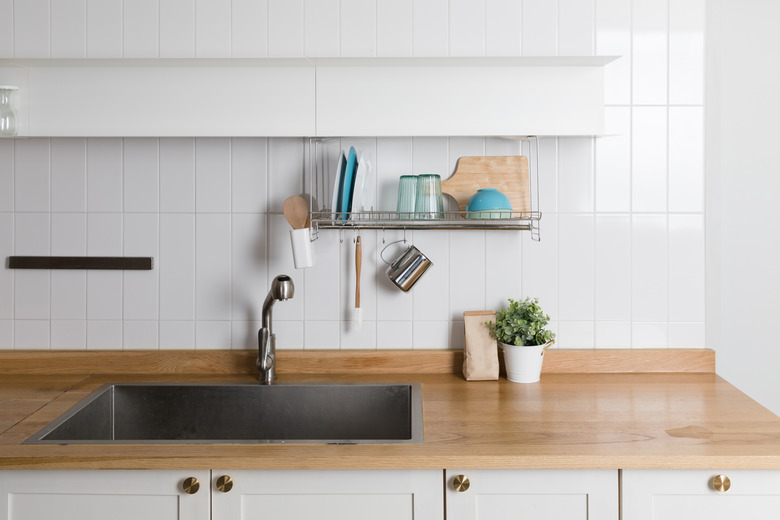Parts Of A Sink
We may receive a commission on purchases made from links.
Unless you're planning to do some repair or renovating work in your kitchen, it's doubtful that you've ever wondered about the parts of a sink. Believe it or not, though, there's more to a sink than meets the eye. Some of these parts, like the sink strainer or sink stopper, have both visible and hidden parts, while a sink trap is usually hidden in a cabinet beneath the sink. It's a good idea to learn more about the different parts of a sink before starting a sink project.
The Sink Basin
The Sink Basin
The basin is an open-top container that holds water from a faucet and then empties through a drain. The sink basin is the main part of a sink and can be used for several purposes, including dishwashing and washing hands. Sink basins can be located on a countertop, on legs, on a pedestal or mounted on a wall.
Sink basins come in many sizes and shapes and are available in a variety of materials, including stainless steel, cast iron, copper, porcelain and glass. There are pros and cons to each material. For example, cast iron sinks are heavy but durable and come in a variety of colors, while a glass sink can be a significant part of a room's decor but usually requires a special nonabrasive cleaner.
Faucet and Water Pipes
Faucet and Water Pipes
A faucet is one of the main parts of a sink and distributes water into the basin. Sink faucets come in many shapes, sizes and prices, but they all have the same basic function, which is to pour water into the basin. Faucets come in two basic styles. Two-handle faucets have a separate handle for the hot and cold water, while single-handle faucets control both the hot and cold water with one handle.
Hot and cold water pipes connecting to the faucet are usually hidden beneath a cabinet or behind a pedestal. Pipes are run up through the floor or through the wall, with the hot water pipe on the left and the cold water pipe on the right. Both pipes should have a valve that allows you to turn off the water to the faucet. This is necessary when repairing or replacing the faucet. Located above the valves are supply tubes that connect the water pipes to the faucet.
Drain and Trap
Drain and Trap
Water leaves the sink basin through a drain pipe connected to the lowest point of the basin. Like water pipes, the drain pipe is located under the cabinet or behind the pedestal and either comes up through the floor or through the wall. In older homes, the drain pipe material might be copper, lead or cast iron, but in modern houses, PVC pipe or polished chrome is used for drainage.
A sink strainer connects the basin to the drain pipe. The strainer body is installed in the hole at the bottom of the basin and connected to the drain pipe with a locking nut. Inside the strainer body is the sink strainer, which keeps water in the basin and can be removed or adjusted to allow the water to drain.
A sink trap is installed between the drain pipe and the sink strainer. Its function is to trap debris that has drained from the sink basin while preventing sewer gases from entering the home. A sink trap sometimes has a cleanout that allows you to clean the trap.
